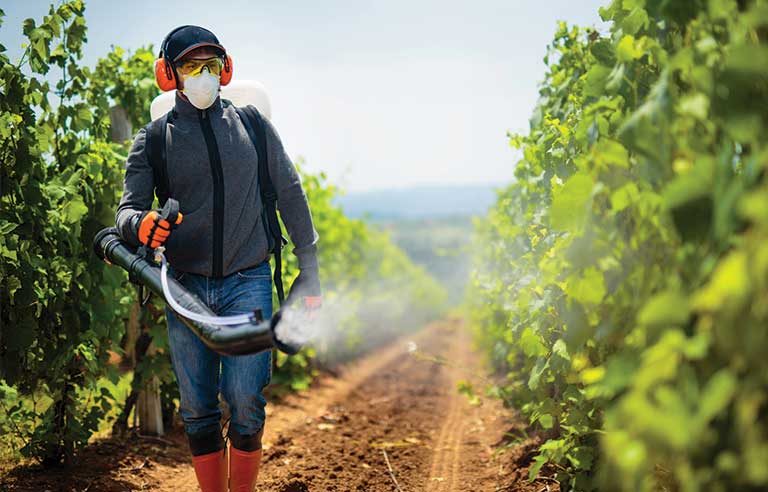EPA finalizes rule on workers and pesticide ‘exclusion zones’

Washington — The Environmental Protection Agency has published a final rule that restores pesticide application exclusion zone requirements intended to protect farmworkers, pesticide handlers and workers’ families.
EPA defines the application exclusion zone as “the area surrounding the application that must be free of all persons, other than appropriately trained and equipped handlers, during pesticide applications.”
On Oct. 2, the agency announced it will finalize a 2023 proposed rule “without change,” reinstating AEZ provisions including:
- Applying the AEZ beyond an establishment’s boundaries and when workers are within easements, such as for utility workers to access telephone lines.
- Establishing AEZ distances for ground-based spray applications of 25 feet for medium or larger sprays when sprayed from a height greater than 12 inches from the soil surface or planting medium, and 100 feet for fine sprays.
Further, the rule exempts immediate family members of farm owners from the requirement. It also establishes clarifying language stating that pesticide applications suspended as a result of individuals entering an exclusion zone may be resumed after the individuals have left the area.
An October 2020 EPA final rule revising the AEZ requirement was delayed when the U.S. District Court for the Southern District of New York enacted multiple stays of the rule.
“Farmworkers help to provide the food we feed our families every day and it’s EPA’s job to keep them safe from pesticides,” Michal Freedhoff, assistant administrator of the EPA Office of Chemical Safety and Pollution Prevention, said in a press release. “No one should be at risk from pesticide-related illness because of their job or where they live.”
The rule is set to go into effect 60 days after publication in the Federal Register.
Post a comment to this article
Safety+Health welcomes comments that promote respectful dialogue. Please stay on topic. Comments that contain personal attacks, profanity or abusive language – or those aggressively promoting products or services – will be removed. We reserve the right to determine which comments violate our comment policy. (Anonymous comments are welcome; merely skip the “name” field in the comment box. An email address is required but will not be included with your comment.)

